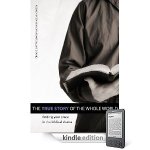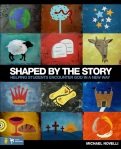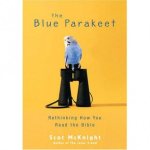CBS stands for Chronological Bible Storytelling. It is used in reference to helping people to understand the sweeping story of the bible. It involves taking a specifically chosen number of stories in the scriptures and working through them in chronological order. The story choice is usually based on pivotal moments and people which allows the participants to interact with (rather than being lectured at) to get a grasp of the whole Bible.
Michael Novelli describes seven main acts of the Scriptures diagrammed by the picture below: Creation/Fall/Israel/Jesus’ life/Jesus death & resurrection/Church/New Creation.

Included within those 7 acts they encourage CBS on 24 occasions as pictured below.

What does a Chronological Bible Storytelling gathering look like? Glad you asked. I’ll be leading one this Sunday with our FCA (Fellowship of Christian Athletes) Village this Sunday. Michael Novelli presents these 6 elements to a CBS gathering:
1. REVIEW of previous stories
This is a fast-paced and fun look back at stories you’ve already told. Use art and media– whatever medums you can to help students reconnect. Review helps get everyone on up to speed and allows another opportunity for students to see connections between the stories.
2. PREPARE for imaginative listening
We live in a culture of distraction. It is essential to the storying process that you set a relfective tone and challenge your group toward imaginative listening. Slow down, light a candle, and help your group concentrate so they can see the story unfolding in their minds.
3. NARRATE the new story
This is where we tell the Bible story in a way that sparks imagination and brings it to life. I stitch together my own narratives from the Bible text in order to smooth out the language and make them more readble.
4. REPLAY the new story
The key to replaying is variety and fun. Use lots of different activities that will connect with different types of learners. Use art, drama, music–play and laugh together!
5. DIALOGUE about the story
Dialogue is where key truths emerge and the story starts to becomes “our” story. Questions are used to direct students to discover insights from the stories. The goal is not for everyone to give the same answer–it is to spark wonder and careful observation of the story. In the midst of curiousity, connections and applications surface naturally. I use these kinds of questions to help spark thoughtful responses:
Wondering Questions to spark imaginative responses: “When you listened to this story, what did you see in your mind?”
Remembering Questions to recount the details: “How did this story describe God’s relationship with Adam and Eve?”
6. CONNECTION groups
Often I will break my students into smaller groups to process how the story is connecting with their own stories. This time will center on discussion and prayer focused by a question like: “You were created in God’s Image. How should this change the way you live?”
Bible Storying is just one method to engage with the scriptures. Like any other, it has it strengths and weaknesses. Where it stands apart is that is gives students great opportunities to think for themselves, wonder, engage through multiple learning styles, and use reason and imagination congruently to enter the Biblical Story.
Bible Storying is an adventure…it’s a call to explore creative means, embarking on a new path of learning that asks a lot from our students and us. The reward of this adventure is great…a community of people transformed by God, ready to change the world. Together, may we find ourselves in the most amazing story ever told – God’s Story.









